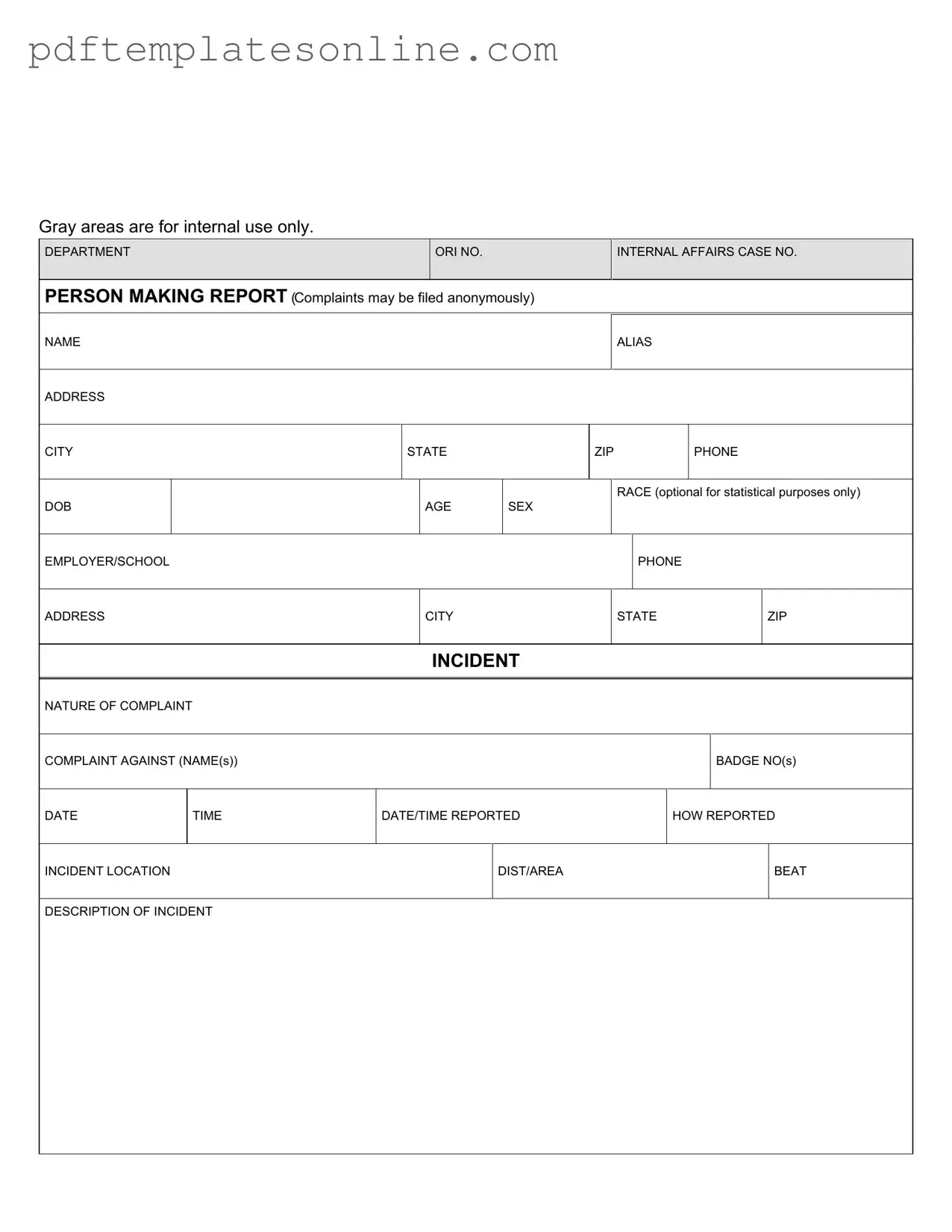When filling out the Police Report form, individuals often make several common mistakes that can hinder the effectiveness of their report. One significant error is providing incomplete information. For instance, failing to fill in essential fields such as the name of the complainant or the incident location can lead to delays in processing the report. Each section of the form is designed to gather specific details that are crucial for an accurate investigation.
Another frequent mistake involves unclear or vague descriptions of the incident. When individuals describe what happened in broad terms, it may lead to misunderstandings or misinterpretations. Clear and concise language is necessary to convey the facts of the situation. Providing specific details, such as the time, date, and nature of the complaint, enhances the clarity of the report and assists law enforcement in addressing the issue effectively.
Additionally, some people overlook the importance of reviewing the form before submission. Errors in spelling, grammar, or factual inaccuracies can undermine the credibility of the report. Taking a moment to proofread the completed form can help ensure that all information is accurate and presented professionally. This step is vital for maintaining the integrity of the report and for facilitating a thorough investigation.
Lastly, individuals may mistakenly believe that their report will remain completely anonymous. While some jurisdictions allow for anonymous complaints, it is essential to understand the specific policies of the law enforcement agency involved. Providing contact information can be beneficial, as it allows investigators to follow up for additional details if necessary. Understanding the reporting process can help individuals navigate their rights and responsibilities more effectively.
